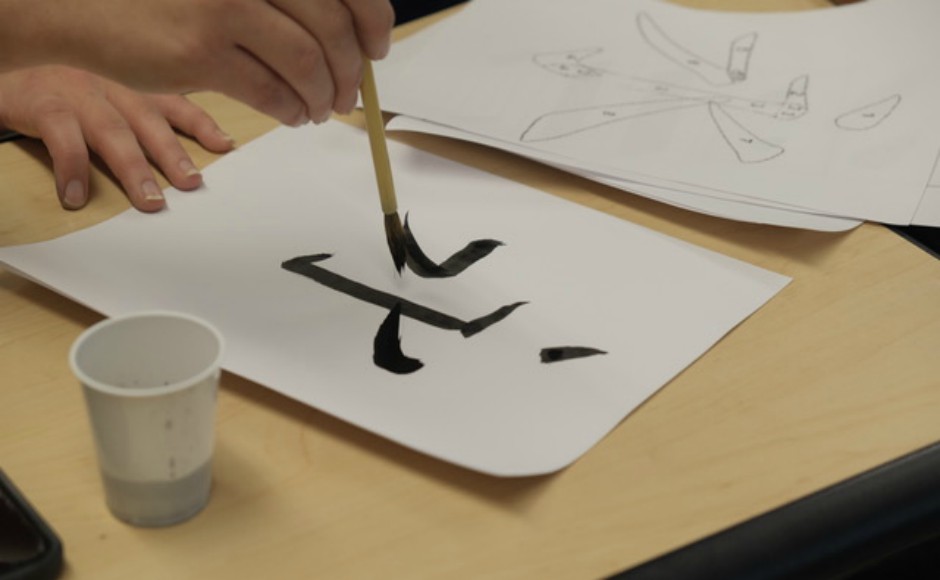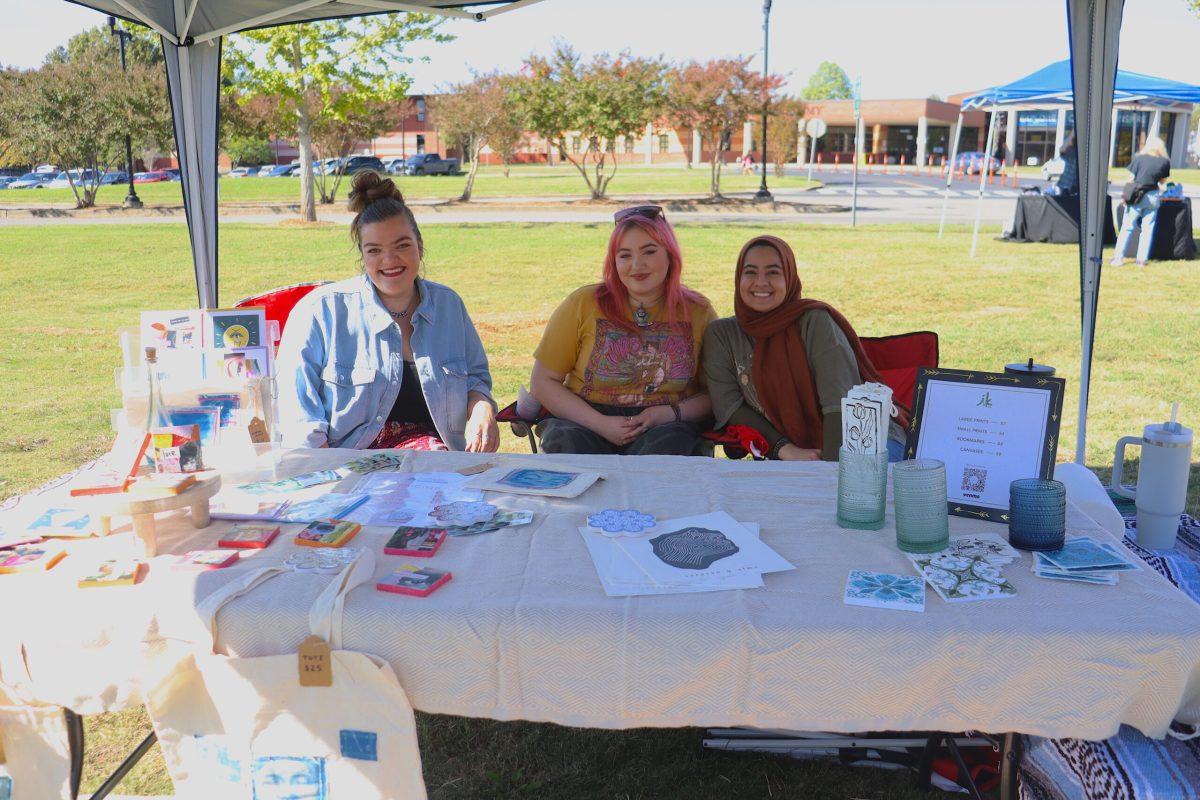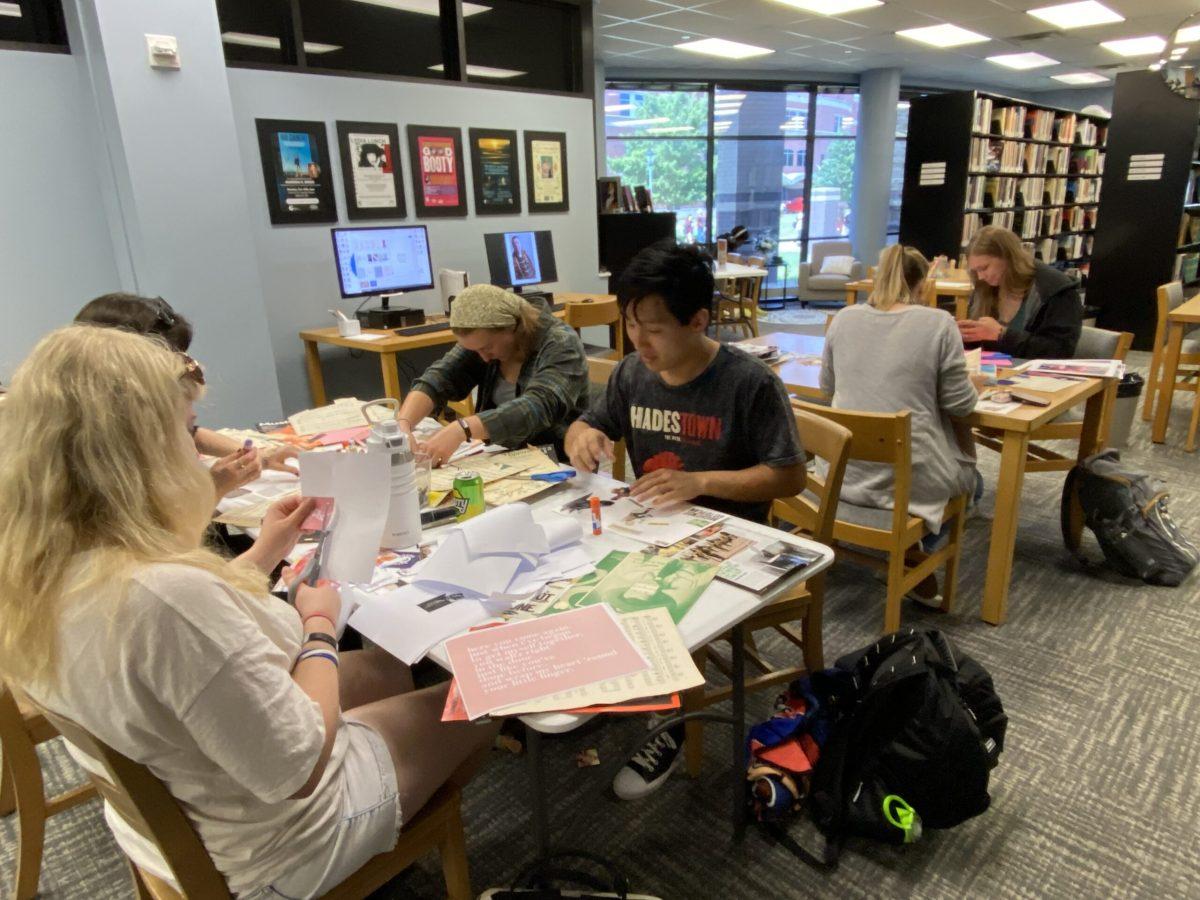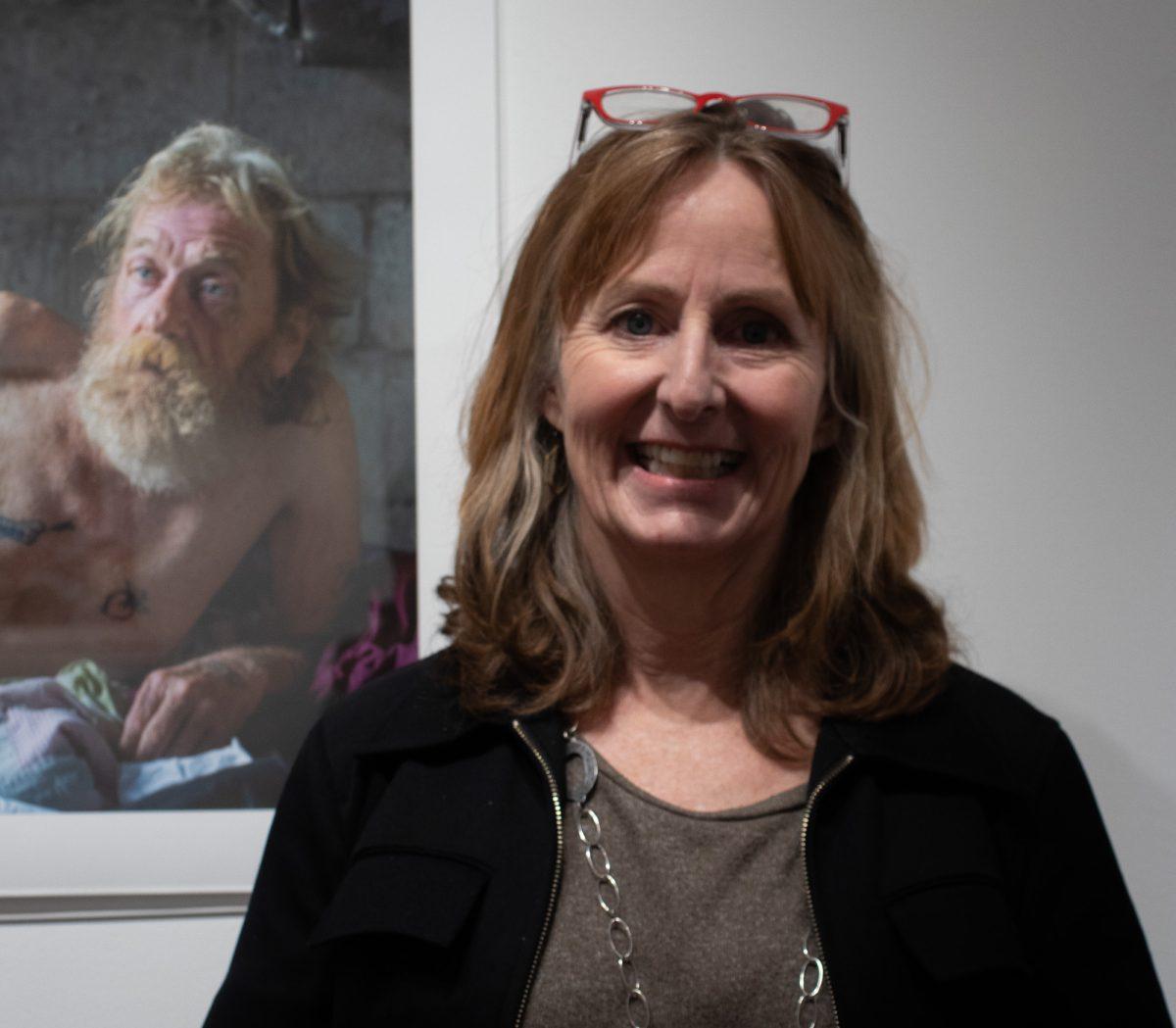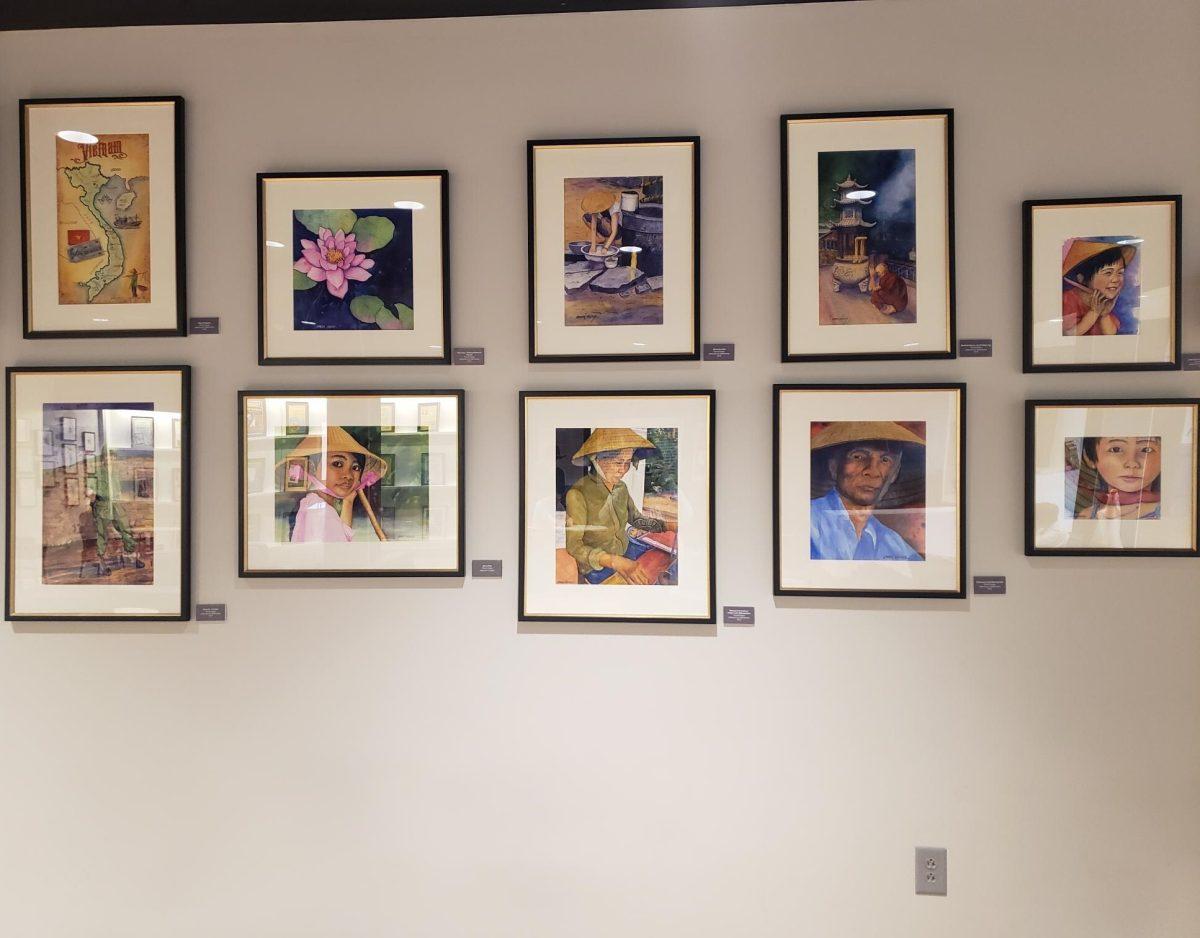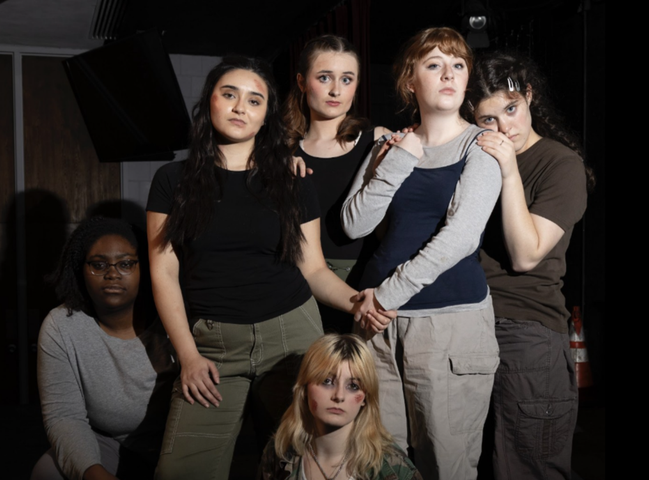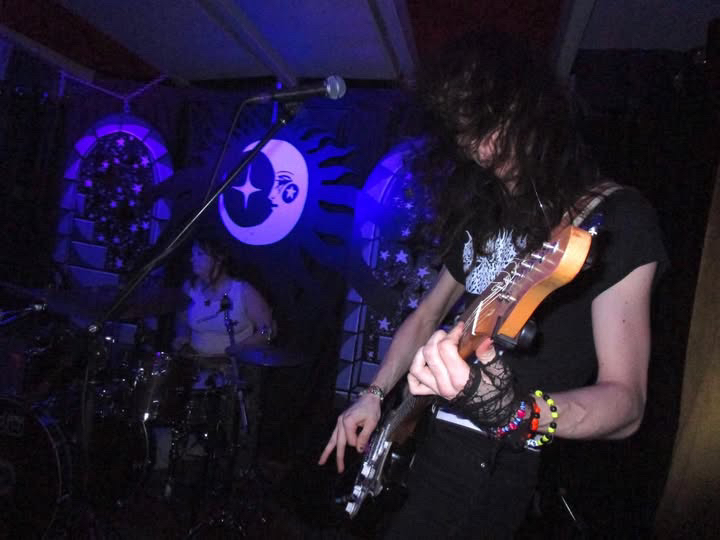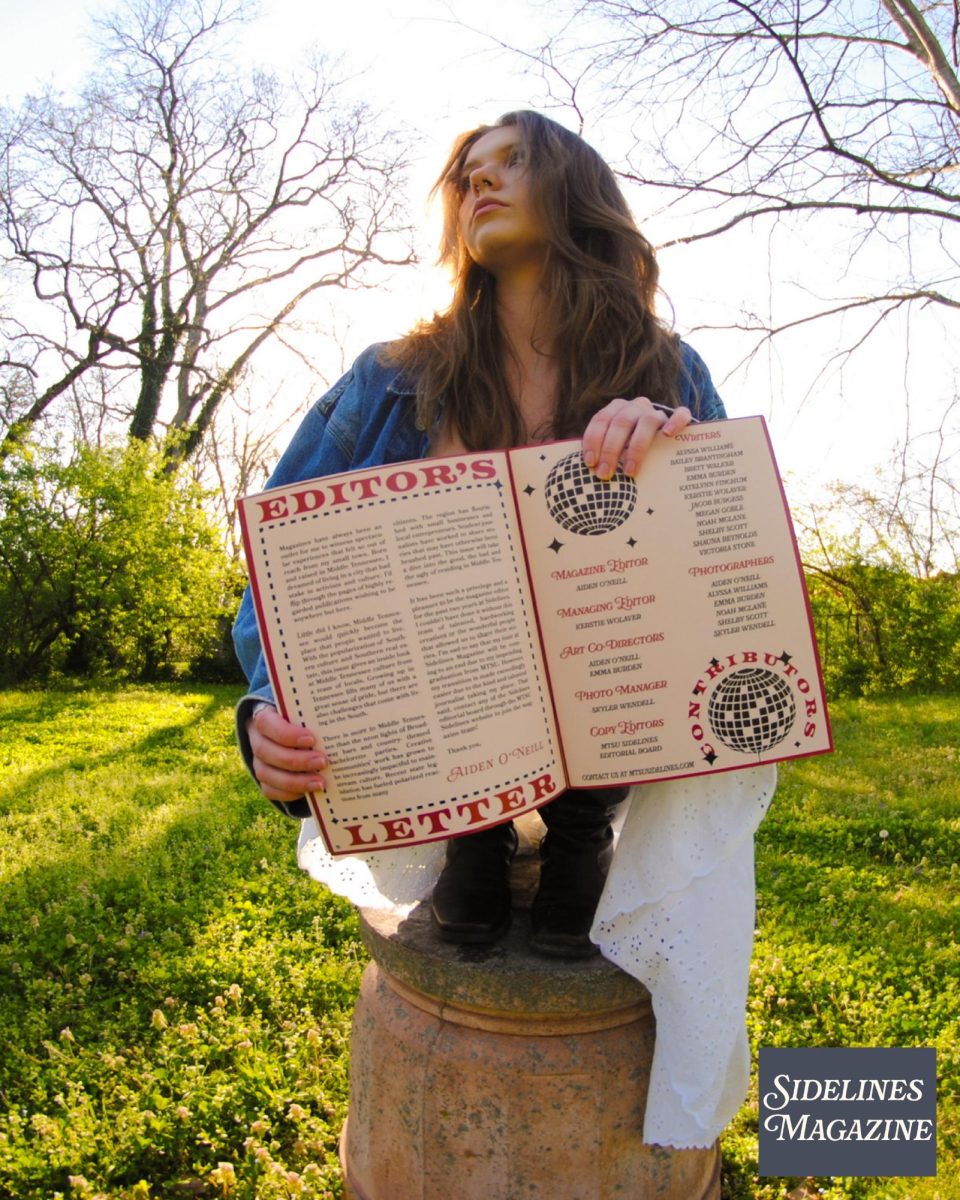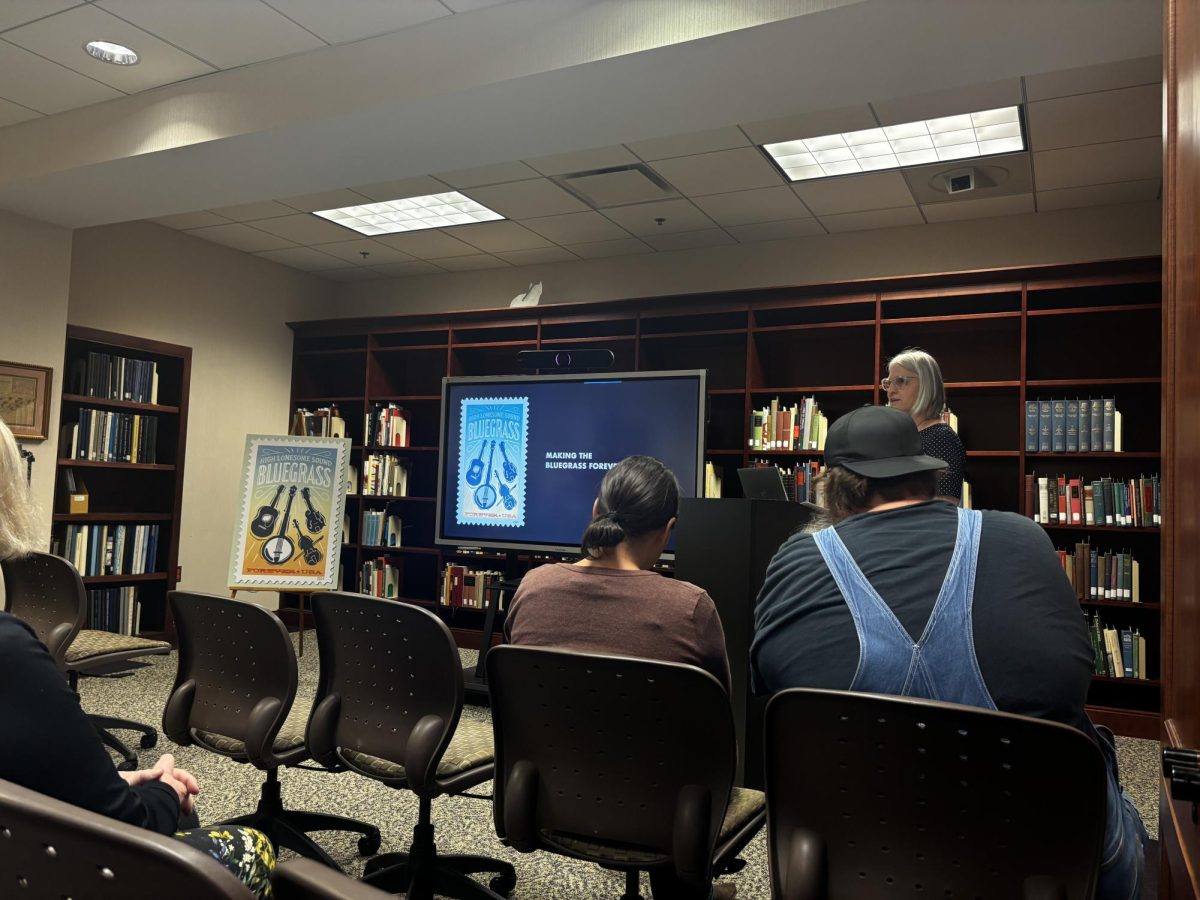Photo and story by Sabrina Tyson / Contributing Writer
Nervous students prepare to touch brush to paper for the first time, while Fusae Ekida, a Japanese professor at MTSU, leans over each of them, trying to teach them proper form.
“I am very strict,” she says as she adjusts a student’s grip.
Ekida, who is from Japan, learned how to practice the art from monks at a temple.
“It’s not about getting the form perfect,” she says. “It’s more about Zen.”
The pages begin to fill with random strokes as the students try and get the feel of the new utensil in their hands. As strokes evolve into Japanese characters, they begin practicing the art of Shodo, which is also known as Japanese calligraphy.
Modern calligraphy, the art of decorative handwriting, has been increasing in popularity on social media. Videos of calligraphy artists making beautiful letters and recreating popular logos have been going viral, some generating up to 7 million views, which has created a resurgence of this centuries-old art form.
While more and more people in the U.S. are practicing calligraphy today, Shodo has been widely practiced in other countries since the origination of the art form. The history of Shodo can be traced back as far as 220 A.D. with roots in Buddhism and China. It wasn’t until the 1800’s that Shodo was seen as a form of art.
In Japan, Shodo is taught as part of the curriculum in schools. Japanese native and professor for MTSU’s Japanese Language Department Chiaki Shima took lessons in Shodo while growing up. She said the lessons continued until middle school. The courses taught in Japanese schools mainly focus on the basics, working to help the students improve their handwriting, according to Shima.
“After I stopped going to lessons, I occasionally practiced calligraphy on my own as a form of meditation,” Shima said.
Shodo, similarly to modern calligraphy, is the artistic writing of characters. It uses Kanji, which are Chinese characters that have been adapted into the Japanese language.
“(Kanji) has a meaning, and it has multiple readings,” said Caleb Morris, the president of the Shodo Club and an art education major at MTSU. “When you learn Kanji, they are just so different from English words.”
MTSU’s Shodo Club meets every Thursday at 4:30 p.m. in the Boutwell Dramatic Arts Building in room 309. Membership to the club requires a $10 membership fee, and this includes many of the supplies necessary for practicing Shodo.
While the purpose of Shodo has changed from the improvement of handwriting to becoming more of an artistic expression, the history is still there. Unlike how modern calligraphy artists are using it to mimic logos of pop culture, Japanese calligraphy tends to stay true to the more historic aspects of the art form, according to Morris.
“(Japanese calligraphy) is primarily a tool to give people better hand writing…but for the artistic reason, a lot of people use archaic Kanji,” Morris said.
The use of Kanji instead of English words adds to the emotional depth of the art form, according to Morris.
“I think it is the difference of writing a meaning instead of a word,” Morris said.
The difference in the language is one of the main reasons he felt more drawn to Shodo than modern calligraphy.
As far as the rise in popularity of calligraphy, “people still crave the writing sensation,” Morris said. He believes that, as long as people continue to be interested in making things with their hands, calligraphy of all types will continue to be practiced.


